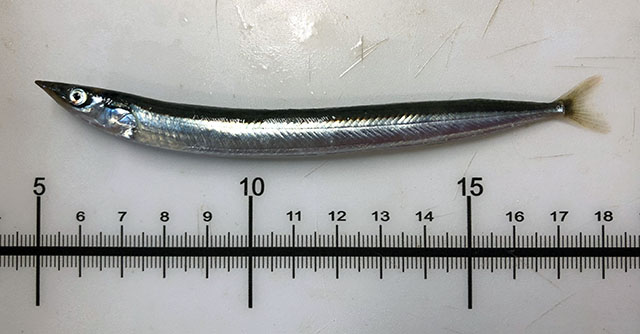| Ammodytidae (Sand lances) |
| 30 cm TL (male/unsexed); max.weight: 100.0 g; max. reported age: 11 years |
|
benthopelagic; brackish; marine; depth range 0 - 275 m, oceanodromous |
| Arctic, Northwest to Northeast Pacific: Arctic Alaska to the Sea of Japan and Balboa Island, southern California, USA. Western Atlantic: northern Quebec, Canada to North Carolina, USA. The Arctic and Pacific populations may be a separate species, distinct from the Atlantic populations (Ref. 7251). |
|
Dorsal spines (total): 0-0; Dorsal soft rays (total): 58-63; Anal spines: 0-0; Anal soft rays: 28-31; Vertebrae: 68-72. Resembles A personatus in body shape but distinguished by its numerous dorsal fin rays (58 to 63 against 55 to 59) an vertebrae (68 against 67), and larger eyes. Lateral plicae 144 to 161. |
| May occur in large schools near the surface both inshore and offshore, but also buries itself in sand (Ref. 2850). Inshore, found from intertidal to subtidal areas (Ref. 2850). Offshore, found near the surface over deep water (Ref. 2850). Benthic (Ref. 58426). Juveniles and adults feed on zooplankton (Ref. 28499). Utilized dried or salted and frozen; sometimes targeted as a raw material for fishmeal; eaten fried (Ref. 9988). |
|
Not Evaluated (N.E.) Ref. (130435)
|
| harmless |
Source and more info: www.fishbase.org. For personal, classroom, and other internal use only. Not for publication.

